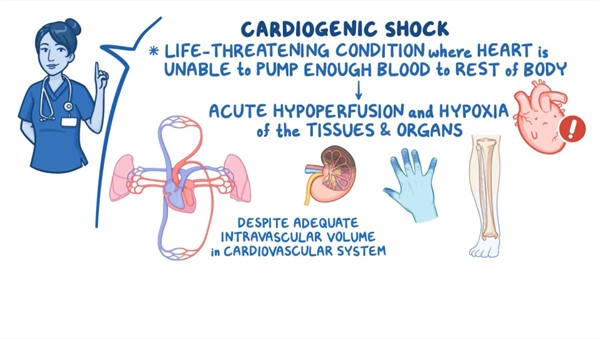The nurse needs to estimate quickly the heart rate of a patient with a regular heart rhythm. Which method will be best to use?
Print a 1-minute electrocardiogram (ECG) strip and count the number of QRS complexes.
Calculate the number of small squares between one QRS complex and the next and divide it into 1500.
Use the 3-second markers to count the number of QRS complexes in 6 seconds and multiply by 10.
Count the number of large squares in the R-R interval and divide by 300.
The Correct Answer is C
This method, known as the 6-second method, involves counting the number of QRS complexes in a 6-second interval on the electrocardiogram (ECG) strip and then multiplying that number by 10 to calculate the heart rate per minute. The advantage of this method is that it provides a relatively quick estimate of the heart rate.
A. Printing a 1-minute ECG strip and counting the number of QRS complexes in (option A) is incorrect because it can be time-consuming and may not be practical in situations where a quick estimate is needed.
B. Calculating the number of small squares between one QRS complex and the next and dividing into 1500 in (option B) is incorrect because it is a method used to calculate heart rate, known as the "1500 method," but it is not as quick as the 6-second method and requires more time and measurement precision.
D. Counting the number of large squares in the R-R interval and dividing by 300 is another method used to calculate heart rate, known as the "300 method," but it is also less quick and less accurate for assessing heart rate in patients with regular rhythms.
It's important to note that if the heart rhythm is irregular, these methods may not provide an accurate estimate of the heart rate, and a longer monitoring period or a different approach may be necessary.
Nursing Test Bank
Naxlex Comprehensive Predictor Exams
Related Questions
Correct Answer is D
Explanation
Norepinephrine is a vasopressor medication commonly used in the management of septic shock. It acts as a potent vasoconstrictor to increase systemic vascular resistance and improve blood pressure. By constricting blood vessels, norepinephrine helps restore tissue perfusion and improve organ function.
A. Nitroglycerine (Tridil) in (option A) is incorrect because: Nitroglycerine is a vasodilator and would further lower blood pressure. It is not suitable for a patient with septic shock who already has low blood pressure.
B. Atenolol (Tenormin) in (option B) is incorrect because: Atenolol is a beta-blocker and would further decrease heart rate and blood pressure. It is not appropriate for a patient in septic shock who requires intervention to increase blood pressure.
C. Dobutamine (Dobutrex) in (option C) is incorrect because: Dobutamine is an inotropic medication used to increase cardiac output. While it can be helpful in certain types of shock, such as cardiogenic shock, it is not the first-line choice for septic shock when there is inadequate blood pressure response.
Correct Answer is ["A","B","D","E"]
Explanation
A. Narrowed pulse pressure: In cardiogenic shock, the cardiac output is compromised, resulting in reduced stroke volume and subsequent narrowed pulse pressure. The pulse pressure is the difference between systolic and diastolic blood pressure.
B. Tachycardia: Tachycardia is a compensatory response in cardiogenic shock, as the body attempts to increase cardiac output to maintain tissue perfusion despite decreased stroke volume. Increased heart rate is a common finding in this condition.
D. Pulmonary congestion: Cardiogenic shock is often associated with impaired left ventricular function, leading to an inadequate pump mechanism. This can result in fluid accumulation and congestion in the pulmonary circulation, leading to pulmonary edema and congestion. Patients may experience symptoms such as dyspnea, crackles on lung auscultation, and increased work of breathing.
E. Elevated pulmonary artery wedge pressure (PAWP): PAWP is a measurement obtained during invasive hemodynamic monitoring. In cardiogenic shock, the impaired left ventricular function leads to increased left atrial pressure, which is reflected by an elevated PAWP. Elevated PAWP indicates increased fluid volume and congestion in the left side of the heart.
C. Elevated SBP in (option C) is incorrect because Elevated systolic blood pressure (SBP) is not a typical finding in cardiogenic shock. Instead, hypotension or decreased blood pressure is commonly observed due to reduced cardiac output.

Whether you are a student looking to ace your exams or a practicing nurse seeking to enhance your expertise , our nursing education contents will empower you with the confidence and competence to make a difference in the lives of patients and become a respected leader in the healthcare field.
Visit Naxlex, invest in your future and unlock endless possibilities with our unparalleled nursing education contents today
Report Wrong Answer on the Current Question
Do you disagree with the answer? If yes, what is your expected answer? Explain.
Kindly be descriptive with the issue you are facing.
